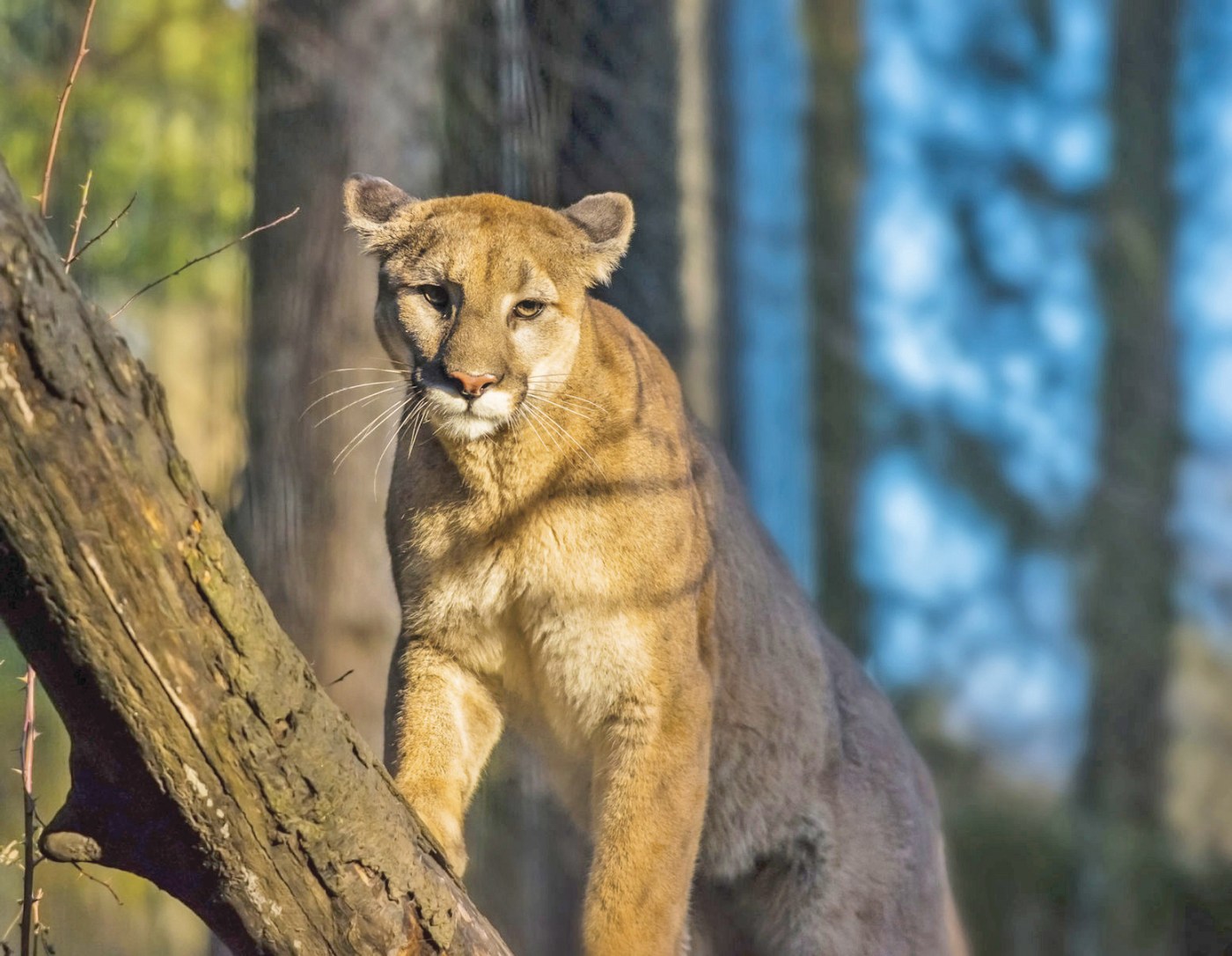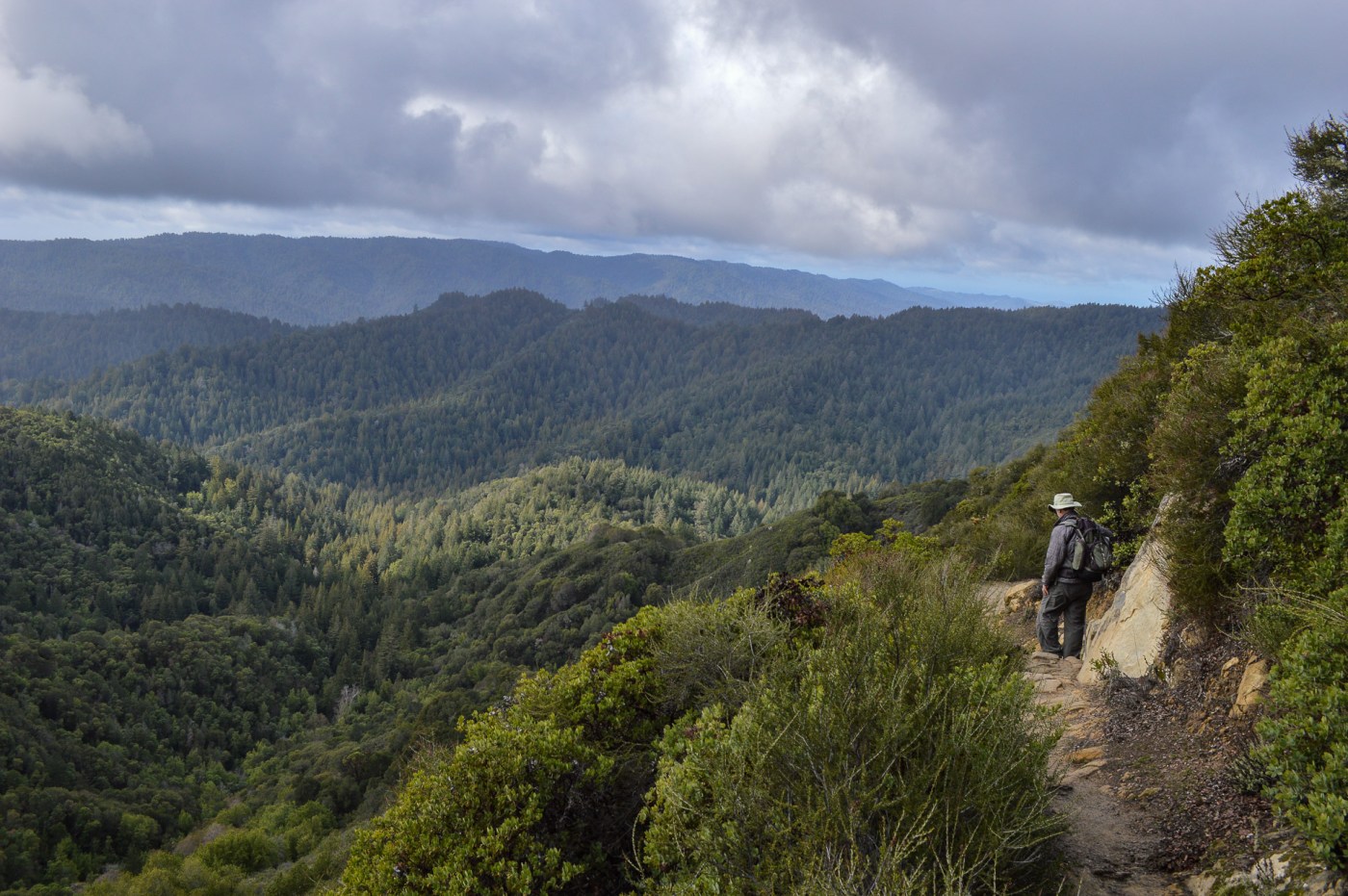Imagine getting a backyard alert on a regular Tuesday morning. You brace yourself, ready to confront an intruder — only to find a giant cat darting away.
That’s exactly what happened to Steven Fitzpatrick this week. Brentwood police posted a video provided by a resident of a mountain lion roaming outside Fitzpatrick’s home near Fairview Avenue and San Jose Drive.
And it’s not the only case this month. According to Bay Area Puma Project and other local media coverage, there have been at least nine reported possible mountain lion sightings in July in the Bay Area, including San Francisco, Terra Linda, Berkeley, Brentwood and Las Trampas. Mountain lion activity has been spotted during hikes, in campgrounds, in neighborhoods — even in backyards.
Mountain lions sometimes venture into human-populated areas due to habitat and food needs, according to the Mountain Lion Foundation. These animals are highly territorial. Males typically claim about 150 square miles, while females occupy about 50. They may be traveling across their territory or, if they are younger and dispersing, searching for new ground.
Related Articles
Dozens of peacocks and peahens go missing from historic Northern California hotel
Rescuers corral ailing sea lion in Marin County neighborhood
Los Gatos teenagers use photos, website to track wildlife and educate public
A day in the life of a Bay Area bird-watcher: ‘It’s a movement’
Trump administration axes plans to kill invasive owls in Northern California
Their habitats include redwood forests, mixed woodlands, coastal brushlands and mountainous areas. Roughly 40% of California provides suitable habitat for mountain lions, according to the California Department of Fish and Wildlife.
Occasionally, a mountain lion may linger in or repeatedly return to urban areas. This usually happens when it finds a steady food source, such as urban deer. If deer become more common in city settings, mountain lions may follow.
However, attacks on humans are rare: Only six fatal mountain lion attacks on humans have been recorded in the state since 1890. Learning to coexist with these animals remains essential.
What to do if you encounter a mountain lion
Stay calm and remain still: Hold your ground or back away slowly, keeping your body facing the lion and standing tall. Maintain eye contact.
Never approach or run from the lion: Most mountain lions prefer to avoid conflict — give them space to escape. Running can trigger their instinct to chase.
Avoid crouching or bending over: Biologists think mountain lions don’t view upright humans as prey, but someone squatting might resemble a four-legged animal.
If a mountain lion approaches or acts aggressively
Make yourself look as large as possible: Pick up children, leash pets, and stand close to others. Open your jacket, raise your arms, and wave them slowly to appear bigger.
Make loud, clear noise: Shout firmly, bang a stick or water bottle, anything loud that won’t resemble prey sounds. Speak in a slow, loud voice to disrupt the lion’s hunting instincts.
Act defiant: Throw sticks, rocks or anything you can reach toward the ground in front of the lion, not at its body. These are warning shots to show you can defend yourself and are not easy prey.
If the mountain lion continues to approach
Throw things: Throw objects at its body, not its head, to discourage further aggression. Avoid aiming for the eyes, as serious injury could make the animal more dangerous to others later.
If the mountain lion attacks
Fight back: Use anything — rocks, sticks, jackets, even bare hands. Try to stay on your feet and protect your head and neck. If you’re wearing a backpack, position it to shield yourself like armor.
How to prevent mountain lions entering your backyard
Reduce hiding places: Mountain lions avoid being seen, so it’s important to make your yard less appealing as a hiding spot. Trim bush, remove clutter, and block crawl spaces to limit that.
Remove food sources: Leaving out food attracts wildlife, which in turn can attract predators like mountain lions. Store pet food, secure compost and gardens, and clean grills to discourage animals from lingering.
Secure outdoor animals: Keep pets such as cats and dogs indoors at night if possible, and use fully enclosed pens for animals that must stay outside. Since mountain lions are active during low-light hours, added protection is especially important at those times.
Be mindful when letting out pets: Even in fenced yards, pets shouldn’t be left alone outside. Use leashes, turn on lights, and keep an airhorn handy to stay safe during bathroom breaks.
Install deterrents: Motion-sensing lights and sprinklers can scare off mountain lions and keep them moving. These tools also help improve your home’s overall security.
Report sightings to Bay Area Puma Project or Wildlife Incident Reporting (WIR).





